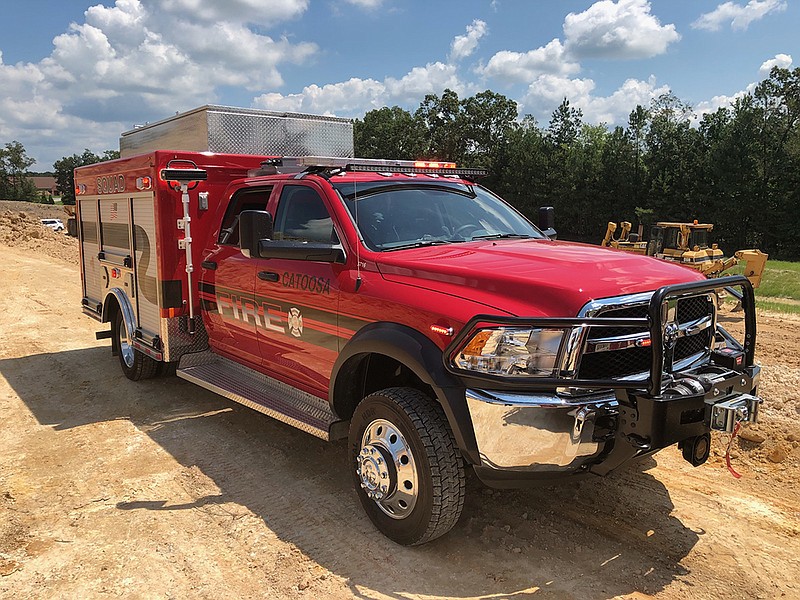The Catoosa County Fire Department has purchased six new quick-response vehicles that are expected to cut down on operating costs while giving emergency responders expanded capabilities.
So far, the fire department has received four of the vehicles, with the remaining two expected to be put into operation by the end of July.
The vehicles are Dodge Chassis cabs with a utility box on the back that carries first aid equipment and other supplies.
The fire department already had one such truck active before the recent purchase. With the new models incoming, that first vehicle will be pulled out of service, restored, and then relocated to one of the stations with the least amount of emergency calls.
The move will ensure that each of the seven stations Catoosa County operates has a quick-response vehicle available on-site, said Fire Chief Randy Camp. The vehicles will work alongside the stations' fire engines to respond to medical calls, car wrecks and other emergencies that may not require an engine.
At $150,010 each, the new trucks are more cost effective than standard fire engines, Camp said.
"Fire engines today cost about a half a million dollars, and the price just continues to go up," he said.
The smaller vehicles will also result in continued cost savings for the fire department, Camp added. While a normal fire engine might be able to travel about 4-5 miles on one gallon of fuel, the quick-response vehicles might get as many as 12-14 miles per gallon, he explained.
Camp said the fire department has already seen some savings in fuel but will not know precise numbers until fire officials review the trucks' performance in three months.
Size will also play a key factor in the new vehicles' ability to get rescue workers to the scene of an emergency faster. The new trucks are more maneuverable than the larger fire engines, better at tackling steep slopes and off-road terrain, and don't take as much time to stop and accelerate.
"It's really surprising the effort that a bigger truck going speeds of 35-45 mph [takes to stop]," said Camp.
Though he said the change may not translate into several minutes, or even 30 seconds, trimmed from the response time, he stressed that every second saved is important - especially when it comes to medical-related emergencies, which account for the majority of the county's calls.
"Every minute somebody's in cardiac arrest the heart continues to die," Camp said. "So in medical response times, minutes and seconds become very important."
While beneficial for county residents in need of service, the new trucks also bring with them additional features that will boost safety for first responders.
All of the new trucks are equipped with a light tower, allowing responders to illuminate the emergency scene to increase safety for those working at the site.
One of the quick-response vehicles, whose cost came in a little higher at $157,000, is also equipped with a firefighter air replenishment system, which can refill the air in rescue workers' self-contained breathing apparatus. In the past, county responders have not been able to refill SCBAs on-site, said Camp.
"We would rush them back here to the fire station and fill them up after the fire, and that sometimes becomes time consuming," he said. "So we'll operate more efficiently with these vehicles."
Email Myron Madden at mmadden@timesfreepress.com.
